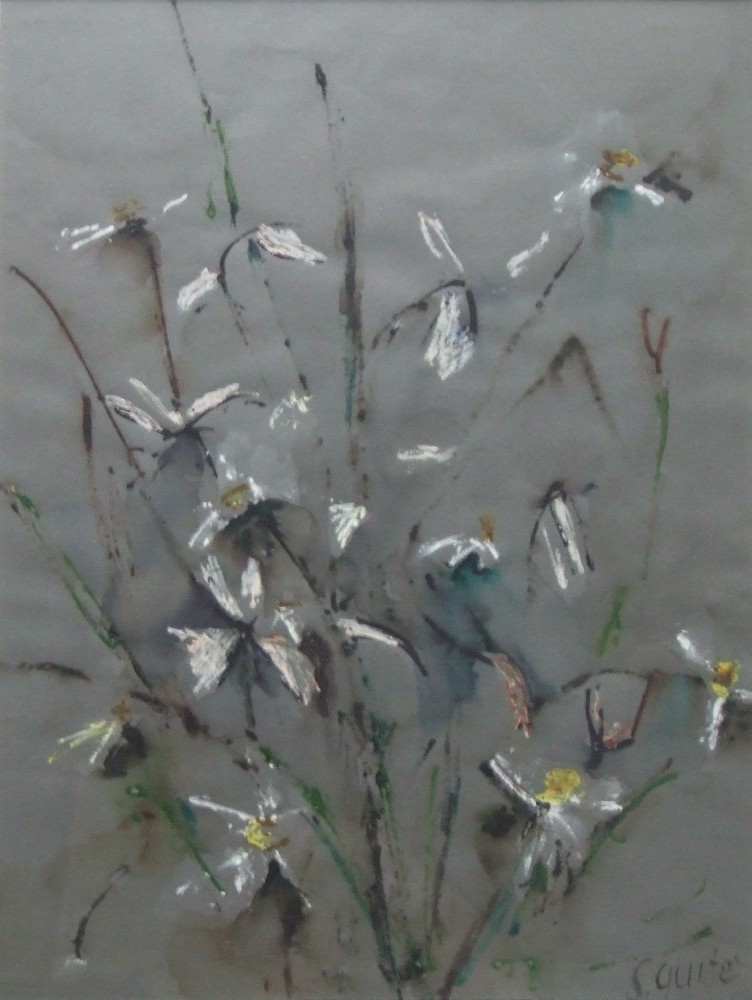Suzanne Guité was born on December 10, 1926, in New Richmond, Quebec, and died on February 6, 1981, in San Augustin Etla, Mexico. She is a Quebecois artist who has made a name for herself in Canada and internationally.
Suzanne Guité is a sculptor, painter, and watercolorist, and has designed tapestries and murals.
She studied architecture at the Institute of Design in Chicago with Laszlo Moholy-Nagy and sculpture with Archipenko and later with Brancusi in Paris.
Guité then continued her studies at the Accademia di Belle Arti di Firenze and then at the Instituto Politécnico Nacional in Mexico City. She is passionate about archaeology and the art history of Crete and Rhodes.
While studying in Florence, she met the painter Alberto Tommi and they married.
In 1956, she and her husband, the painter Alberto Tommi, founded the Percé Art Center, which became a hotbed of artistic life in Quebec. That same year, she was awarded third prize ex aequo with Robert Roussil in the Quebec Province Art Competition.
In 1958, she was invited to the Venice Biennale.
She created a monumental sculpture, Maternity with Twins, for the Canadian Pavilion at Expo 67.
She was elected a member of the Royal Canadian Academy in 1975.
Known primarily for her sculpture, she was also interested in painting, watercolor, tapestry, and murals.
From 1956 to 1960, she painted and sculpted murals; she also created paintings, watercolors, and tapestries throughout the 1950s, 1960s, and 1970s. Among her works is a 20-by-18-foot (6 x 5.5 meter) terracotta mural in the lobby of the New Carlisle Courthouse.
Guité’s life was profiled in “S. Guité: The Quiet Force,” an episode of the documentary series Forgotten Stories.
For her, sculpting is a kind of ritual that requires listening to the material, which leads her to always carefully select ancient stones or wood collected in the Gaspé Peninsula or brought back from South America.
Her career reflects her ongoing interest in the universal theme of humanity’s relationship with the universe, our quest for the absolute, death, and a return to our original life. Her works evoke the mythology of the earth and the forest, which harks back to the earliest civilizations. Oscillating between figuration and abstraction, her pieces are also influenced by pre-Columbian and Polynesian art and focus on themes of human representation, motherhood, love, and relationships.
Her work appears in exhibitions at the Musée d’art contemporain de Montréal, the Musée du Québec—now the Musée national des beaux-arts du Québec (MNBAQ)—and the Musée Rodin in Paris.
Suzanne Guité’s works can be found in private, corporate, and public collections, including the Musée national des beaux-arts du Québec (MNBAQ), where Le Chercheur d’espace (1948) is exhibited, the Musée du Bas-Saint-Laurent, the Musée de la Gaspésie, the Musée d’art contemporain de Montréal, the Art Gallery of Nova Scotia, the Royal Ontario Museum, the Musée d’art de Joliette and the Museum of Modern Art in New York, which owns a sculpture.
The Musée de la Gaspésie organized a retrospective of her work in 1992.
The center she created with her husband still bears her name and the center organizes exhibitions and the Perseids festival.
Suzanne Guité Square in New Richmond was named in her honor.
Other Exhibitions
University Circle, Montreal, April 1950.
Sculptures and Drawings by Suzanne Guité, Agnès Lefort Gallery, May 5–19, 1951.
São Paulo Museum of Art, 1959.
Exhibition of ten sculptures at the Galerie Libre, Montreal in 1961
Suzanne Guité: Sculptures and Tapestries, Musée du Québec, September 1–October 17, 1977.
References Wikipedia and others
#biography

